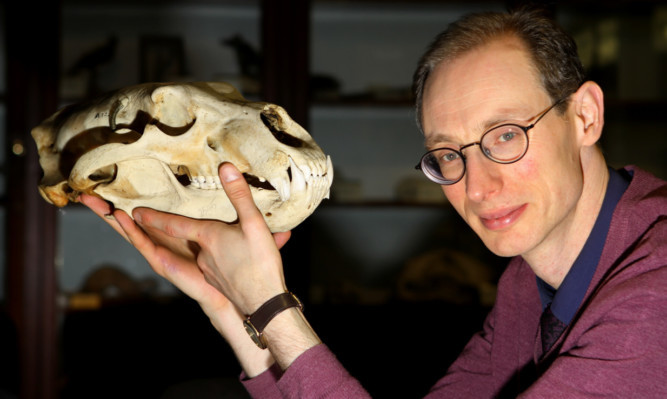From RRS Discovery to the famous King Penguin, Dundee’s links with the so-called heroic age of polar exploration and whaling are well documented.
Now a new exhibition featuring artworks inspired by these polar connections will open at the University of Dundee’s D’Arcy Thompson Zoology Museum.
In the 19th century, Dundee was the major European capital of the whaling industry.
Every year, whaling ships would sail to the Arctic to hunt whales, their oil being used for lighting and their bone used for corsets.
Whale oil was also the catalyst for Dundee’s world domination of the jute industry. It was used to make jute workable, transforming Dundee into what was known as Juteopolis.
The city’s expertise in building whaling ships led the Discovery and many other Antarctic exploration vessels to be built in the city, while former Dundee student Alister Forbes Mackay was a member of the first party to reach the South Magnetic Pole in 1909.
But the whale hunters also brought back specimens for museums and Inuit artefacts traded with the native people they met, and many can still be viewed today.
These stories and others have inspired third-year Illustration students at the university’s Duncan of Jordanstone College of Art and Design to create artworks inspired by these polar adventures. Led by tutor Natalie Russell, their work will be showcased in the special exhibition, alongside specimens brought back from the Arctic and Antarctic for D’Arcy Thompson’s collection.
Museum curator Matthew Jarron told The Courier: “At that time, D’Arcy Thompson, the university’s first professor of biology, was building up a large zoology museum, and he made friends with the whaling captains and encouraged them to bring back specimens for him.
“He also sent his assistant and one of his students on whaling expeditions to ensure more scientific collecting of marine specimens.
“Thanks to these connections, he quickly built up what was at the time thought to be the largest collection of Arctic zoology in the world.
“The whalers also brought back specimens for the city museum – now the McManus, then called the Albert Institute – and occasionally they brought back live Inuit who were treated as VIPs and shown round the town.”
In 1896-7 D’Arcy made his own expeditions to the sub-Arctic Bering Sea as part of an international inquiry into the fur seal industry. Recognising that the species was threatened with extinction, he helped to persuade governments internationally to establish a species protection order, as well as drawing attention to other endangered species in the same ecosystem, such as the sea otter.
D’Arcy also knew many of the great explorers it was probably thanks to him that Nansen became rector of the University at St Andrews and Dundee. He persuaded Shackleton to take one of his former students and lab assistants, Alister Forbes McKay, on his first South Pole expedition aboard the Dundee-built Nimrod, and McKay became one of the party that were the first in the world to reach the South Magnetic Pole. On their return Shackleton presented a King Penguin specimen to D’Arcy’s museum, which is one of the star exhibits today.
Mr Jarron added: “The Arctic and Antarctic regions have long been a source of wonder and adventure. We still revere polar explorers like Scott, Shackleton, Nansen and Amundsen, but there is now an increasing awareness of the impact that humans have on these fragile environments, and particularly on the wildlife that live there.”
Of course ,the names of explorers like Scott, Shackleton, Amundsen and Nansen are still revered from the so-called heroic age of polar exploration.
Yet the death of London-based explorer Henry Worsley last month after trying to cross Antarctica unaided is evident of the fascination the polar regions still have for explorers, and a reminder of the brutal dangers.
When D’Arcy persuaded Shackleton to take Mackay on his expedition, he described him as a “manly fellow, and full of indomitable pluck, as his exploits in the Boer War, of which I have only heard a few, amply demonstrate. I am quite sure that you may trust him through thick and thin as a good comrade, a strong man and a clever fellow.”
Ironically it was the freezing conditions that were eventually to lead to Mackay’s demise in another expedition. In 1913, Mackay made the fatal decision not to wait for Shackleton’s next expedition south but to head north as surgeon on the ill-fated Canadian Arctic Expedition on the Karluk. He died in the ice in 1914, aged 35.
*The exhibition, entitled ‘Pole Tay Pole’, opens at the University of Dundee’s D’Arcy Thompson Zoology Museum, which is in the Carnelley Building on Park Place in the university campus. It includes drawings, prints, paintings, books, sculptural objects, assemblages and research journals. An evening preview takes place from 5.30 to 7pm on Friday February 12 and will then be open for one day only on Sunday February 14 from 11am-4pm.
